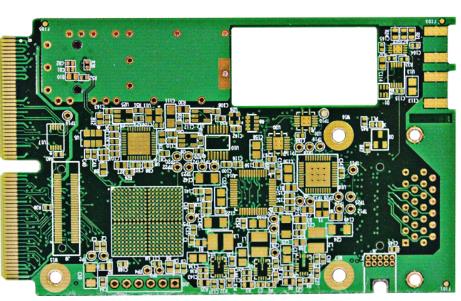Flexible printed circuits were originally designed to replace traditional wiring harnesses, and have grown exponentially from the beginning of World War II to today. Flexible circuits have excellent versatility and are very suitable for simple to complex applications, and can handle almost any circuit board work.
What is a flexible printed circuit?
Flexible printed circuit is a kind of light circuit, it is easy to adapt to smaller space and contour shape. However, they are not just bent PCBs. Flexible circuits have unique differences and advantages, requiring innovative PCB manufacturers to carry out unique designs.
The flexible printed circuit board is composed of conductive metal strips usually made of copper, and is insulated by a dielectric material or a solder mask. The key function of the circuit board is to provide mechanical bending while transmitting electronic signals, so that smaller connectors can be used and EMI radiation noise can be shielded.
The PCB is a substrate or non-conductive board used to connect electronic components to form a circuit.
Basic types of flexible printed circuits
The various available configurations, sizes and functions highlight the versatility of flexible circuit boards. The basic types of flexible circuits include single-sided circuits, double-sided circuits and multilayer circuits.

One-sided
Single-sided PCB circuits have only a single layer of metal on one side of the dielectric layer.
Duality
In contrast, double-sided traces have metal layers on both sides of a single dielectric layer.
Multi-layer
In double-sided circuits, metal layers are often connected through metallized vias. The same through holes can be found on multilayer boards, which contain several individual copper layers encapsulated by a dielectric layer.
Rigid and soft
A rigid flexible PCB combines components from hard and flexible circuits to form a hybrid circuit substrate.
The benefits of flexible printed circuits
Compared with traditional rigid boards and cables, flexible electronic products have several advantages. These include more precise wiring, elimination of mechanical connectors, complete design flexibility, higher circuit density, wider operating temperature range, stronger signal quality, improved impedance control and reliability, and size reduction.
Automated production eliminates the common human errors in manual wiring harnesses. The flexible circuit can only reach the points indicated in the design plan. Less labor is involved in the custom PCB printing process, and the production cost of flexible PCBs is high and time-saving.
Since the degree of freedom of the design process is not limited by two dimensions, the flexible circuit board can be customized in various ways. This flexibility extends to installation, allowing the third dimension of the channel to be connected between two or more planes.
The function of flexible circuit boards is improved by increasing airflow, heat dissipation, and applying high-density devices in point-to-point connections using simplified circuit geometries.
Infrastructure application
Before designing the circuit, two basic structural applications will determine the choice of conductor. A static application is an application that can be flexibly installed only with a flexible circuit. This application usually uses electrodeposited (ED) copper, which is a cheaper option.
Dynamic flexing applications involve dynamic flexing of flexible circuits during daily use of the product. Flip phones, laptops and computer arms all require the use of Rolled Over (RA) copper activity applications.
Flexible printed circuit function
Single-sided and double-sided flexible circuits can have reverse bars, through holes, floating fingers, and ZIF terminations. A multi-layer flexible PCB can contain up to 20 layers, and handles high circuit density through multi-layer conductive layers, through-hole components, embedded resistors, controllable impedance, and EMI shielding.
When the through hole diameter needs to be minimized, flexible printed circuit boards use the smallest pitch and component size to improve signal integrity, electrical performance, and thermal performance.
The flexible design can also lead the signal lines from the high-density area of the device by using blind or buried vias, thereby using the same high-density components in the rigid PCB. Through fast signal switching, fast switching and high clock rate, the controllable impedance has been significantly improved. Signal transmission in all PCBs requires thickness and electrical signals